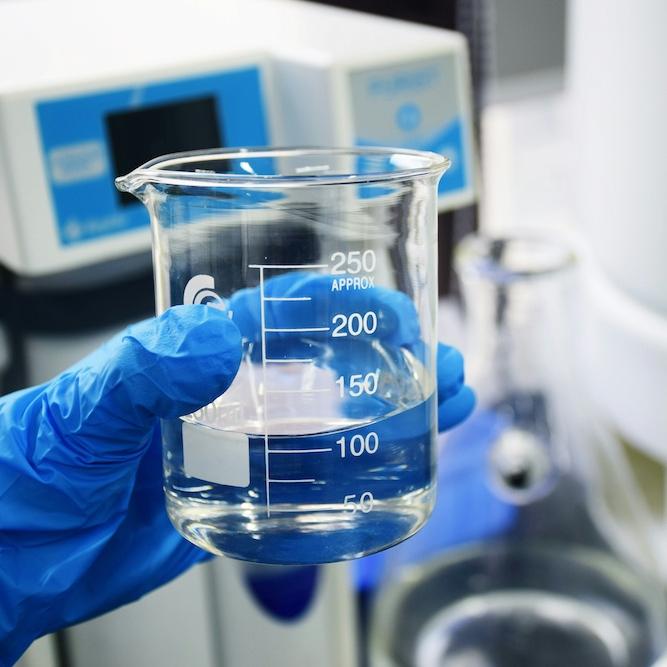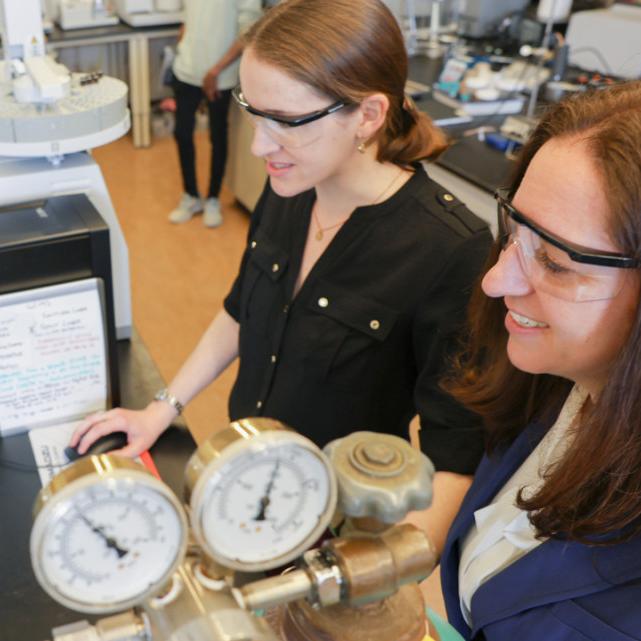One promising strategy for helping tackle the growing climate crisis is the development of materials that can capture the carbon dioxide released by a range of industrial facilities.
A big hitch is the sheer volume of material that would be required to make an impact, and the equally high price tag that would come with manufacturing it. On top of that, many of the leading contenders for carbon capture degrade quickly from oxidation.
An international collaboration led by Phillip Milner, assistant professor of chemical and chemical biology in the College of Arts and Sciences, is using porous, sponge-like materials that can trap carbon dioxide in their cavities while allowing other gases such as nitrogen to pass through. The materials are made from sugar and low-cost alkali metal salts, so they would be inexpensive enough for large-scale deployment, and they could be particularly effective for limiting the environmental damage of coal-fired power plants.
The team’s paper, “Carbon Dioxide Capture at Nucleophilic Hydroxide Sites in Oxidation-Resistant Cyclodextrin-Based Metal-Organic Frameworks,” published May 17 in Angewandte Chemie, a publication of the German Chemical Society. The lead author is doctoral student Mary Zick.
For the last 100 years, the leading method for carbon capture in chemistry has been a process known as amine scrubbing. Amines are organic, ammonia-derived compounds that contain nitrogen. In an aqueous solution, they are able to selectively remove carbon dioxide from gas mixtures. However, oxygen degrades them every time they’re cycled, which means that more and more of the material would need to be produced, thus driving up the cost.
Rather than trying to figure out how to overcome the oxidation problem in amines, Milner’s lab has been experimenting with a different family of materials and designing them specifically for carbon-dioxide capture.
The new project focuses on sponge-like materials containing hydroxide sites in their pores. Typically, solutions of hydroxide salts reversibly react with carbon dioxide and form bicarbonate salts, such as baking soda, trapping the carbon dioxide. But in order to regenerate the hydroxide salt, the material needs to be heated up to 500 to 800 degrees Celsius – no easy feat, and not a cheap one, either.
Zick found that by incorporating bundles of sugar molecules called cyclodextrins as a starter and boiling them with alkali metal salts in water, she could create a sponge-like material that is riddled with cavities in which carbon dioxide binds strongly, but other gases such as nitrogen pass easily through.
“We expose the material to mixtures of carbon dioxide and nitrogen and see if they can absorb the carbon dioxide and ignore the nitrogen, which is the major component of air and emission streams,” Milner said. “The underlying chemistry is really the same as what happens with hydroxide solutions in water. But by doing it in these sponge-like materials, you gain a lot of advantages. The carbon-dioxide capture is very fast, it can have a very high capacity and it may be very stable to oxygen.”
The reversible reactions allow for carbon-dioxide release at relatively low temperatures, about 80 to 120 degrees Celsius. And the material’s tunability makes it useful for an array of applications, from drug delivery to catalysis to gas storage, in addition to separations.
“Coal emissions are still the No. 1 anthropogenic contributor to carbon-dioxide emissions in the world,” Milner said. “What’s nice about this work is that Mary not only found a material that’s useful for carbon-dioxide capture from coal flue gas, but she outlined the structure-property relationships that will allow us to design materials for other applications, like capturing CO2 from natural gas fired power plants, as well as maybe even from air, which is one of the really big challenges of our time.”
An additional bonus of the project is the instrumentation that Zick custom-built to analyze if a gas mixture could be separated in a solid material – a capability that wasn’t previously available at the university. Now Milner’s group is using the modular apparatus to test samples from other Cornell researchers.
“We’ve got people coming out of the woodwork to do these experiments,” Milner said. “We have a little hub now. If somebody brings us some material, in a week or two Mary can tell you if it’s promising for carbon-dioxide capture.”
Co-authors include Suzi Pugh and Alexander Forse of the University of Cambridge; and Jung-Hoon Lee of the Korea Institute of Science and Technology.
The research was supported by the U.S. Department of Energy. The researchers made use of the Cornell Center for Materials Research, which is supported by the National Science Foundation’s MRSEC program.
Read the story in the Cornell Chronicle.





